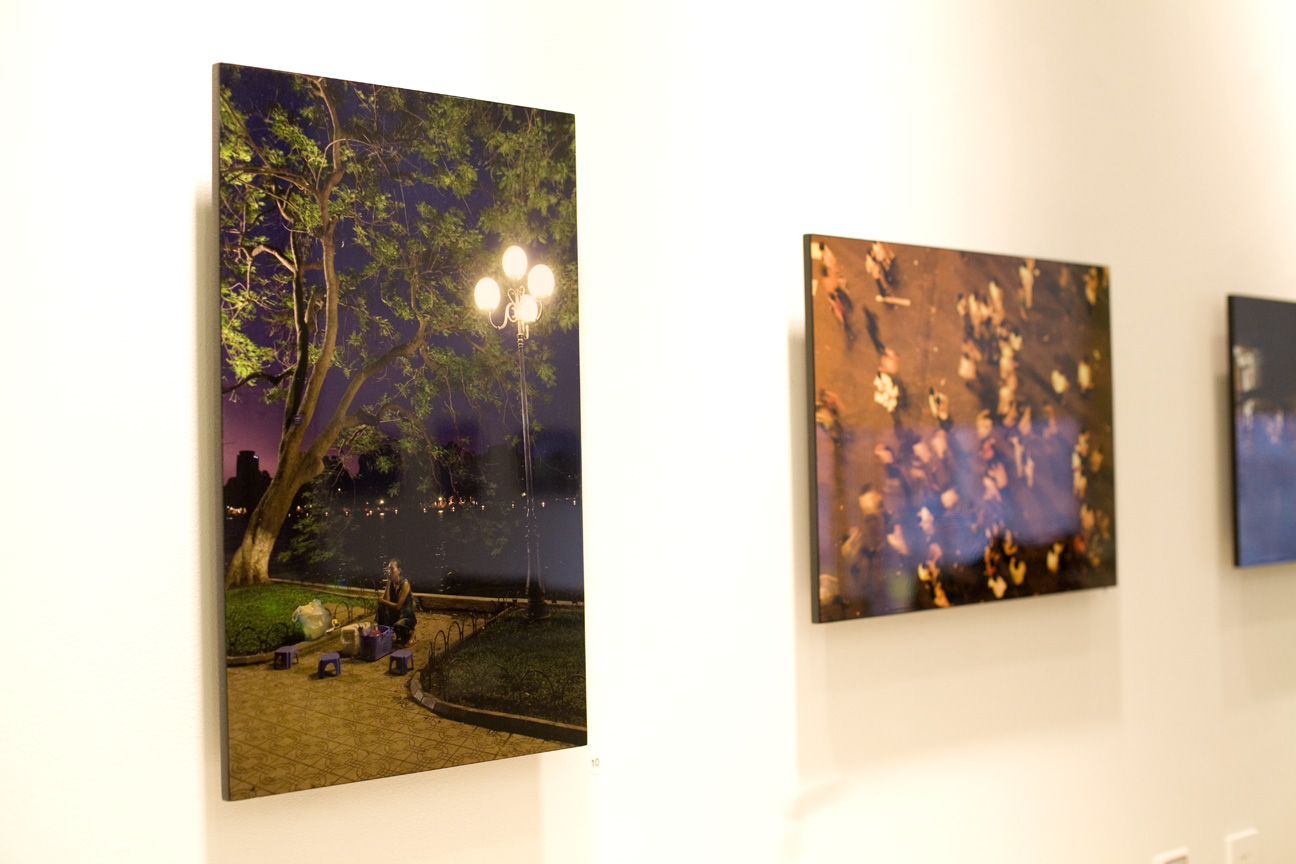The images presented were made at near night or nighttime, when the incandescent and fluorescent lights encapsulate and transform a place into a pocket of space - the space becomes a place of somewhere and nowhere.
While living in Vietnam in 2005, I began to notice lacquer paintings in colorful renditions of cultural representations. Although still traditional in narratives, these lacquer paintings adapted modern colors and shapes influenced by the west. There were also lacquer painting copies of works by Van Gogh, Monet, and other Vietnamese and international artists sold primarily to tourists. I began to see correlations of purpose and intents between lacquer and photography.
Because of its property to seal and preserve objects, the lacquer technique has been used not only in paintings but also on decorative objects such as boxes and furniture as well as utilitarian wares such as vases, bowls, plates and spoons. Lacquer paintings exist in both commercial and fine art forms. The lacquer property for preservation and its dual qualities for decorative functionality and the esoteric can be likened to the photographic medium and process, which has ubiquitous use as evidential documents and preservation of memories as well as a format for fine art or as decorative object.
Lacquering dates back to China 7000 years[i]. Lacquer is a resin made from a sap of the Rhus succedanea tree and its various species, which is native to East Asia. In Vietnamese, lacquer paintings are called sơn mài, sơn means paint and mài means to sharpen or buff. It is an arduous process that alternates between the multiple applications of resin, painting, drying, and buffing. Lacquer is also used as an adhesive and coating in mother of pearl and eggshell inlays and carvings.
I had a shop that produces lacquer products for export mount my photographic prints into lacquer panels. Bonded to a piece of wood and sealed under ten layers of resins that produce a high gloss, the photographic image is transformed into an object that create a visual sensibility of intermingling cultural contexts within the two mediums in process and contents.
http://findarticles.com/p/articles/mi_m1310/is_1988_Oct/ai_6955898
Lacquer is a varnish, which has remarkable powers of preservation, strength and durability. Strong acids and alkalis cannot damage it; it cannot be affected by heat less than 200 degrees -250 degrees C; it cannot be damaged by water or other liquids; it is insoluble to most solvents; and it is resistant to bacterial attack. Lacquer was used for kitchen utensils thousands of years ago in China. Wood, bamboo or cloth utensils coated with many layers of thin lacquer formed the standard dinner service for rich Chinese in place of bronze vessels. They were able to withstand the heat of cooking and serving of food as well as metal. Chinese emperors gave lacquered articles to their officials as recognition for their services, and the monetary value of lacquer ware actually exceeded that of bronzes.
http://www.ezinearticles.com/?Unraveling-The-Uniqueness-Of-Vietnamese-Lacquer-Art&id=499816
imperfections on it are first sealed with lacquer. Traditionally, lacquer comes in three colors- brown, black and vermilion. Artists also use a new technique called chiseling, which gives a richer mix of colors and an apparent sense of size and distance. Next, the wood is covered with a piece of cloth glued to it, using the sap of the lacquer tree and then coated with a layer of the sap mixed with earth. The board is sand papered and recoated with a layer of hot sap. The board is then polished to lend a smooth black surface with a brilliant luster. Once the board is prepared, the painter begins to give expression to his imagination. He draws the outline and applies color one by one so as to let each coating dry slowly. Polishing and washing are the final steps of the procedure, which should be attended with great care. These add a brilliant shine to the surface of the painting. Years of experimentation have produced some great stuff where Vietnam artists have used such materials as plant ash, crushed eggshells, gold and silver to beautify their works.



